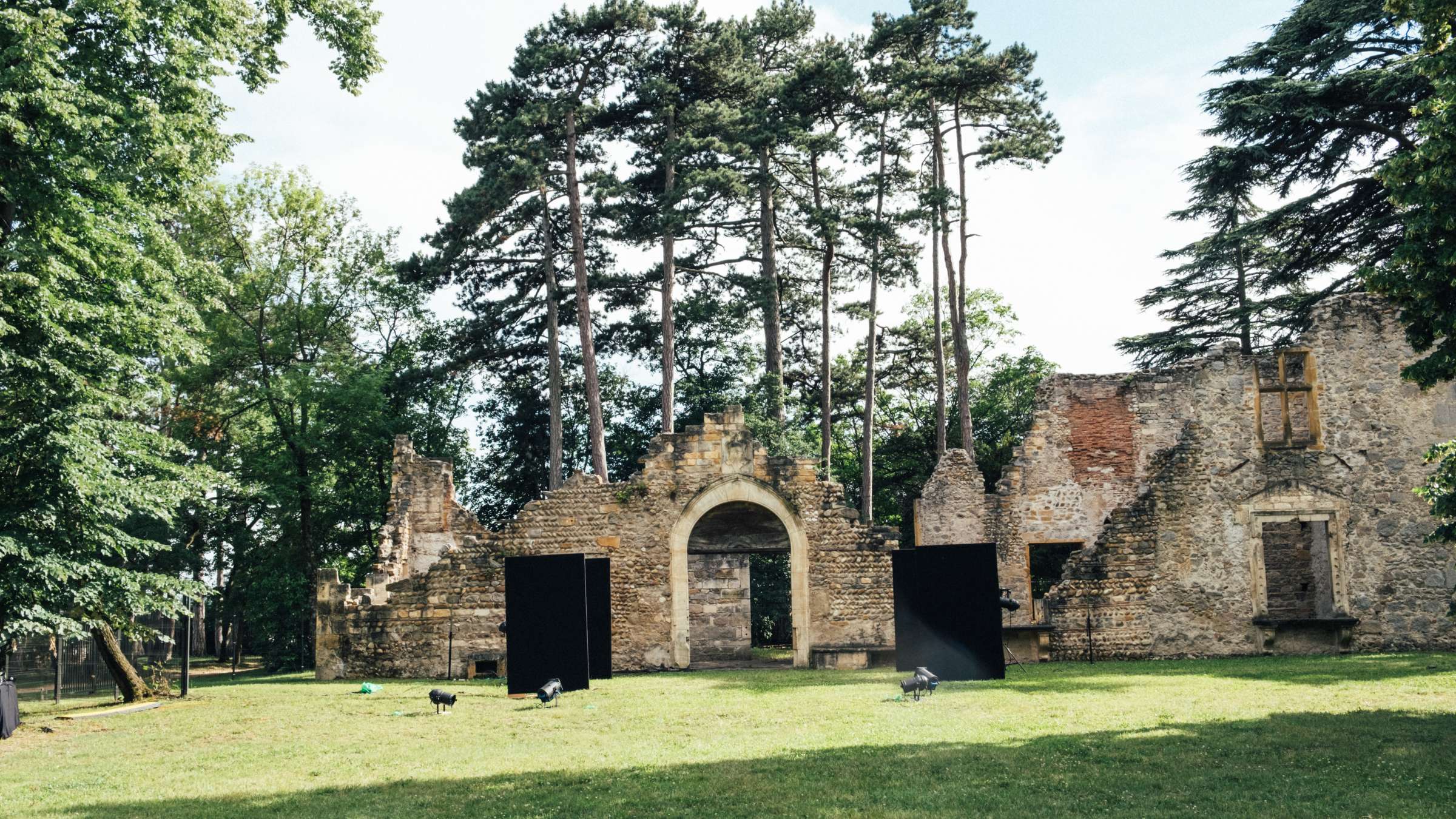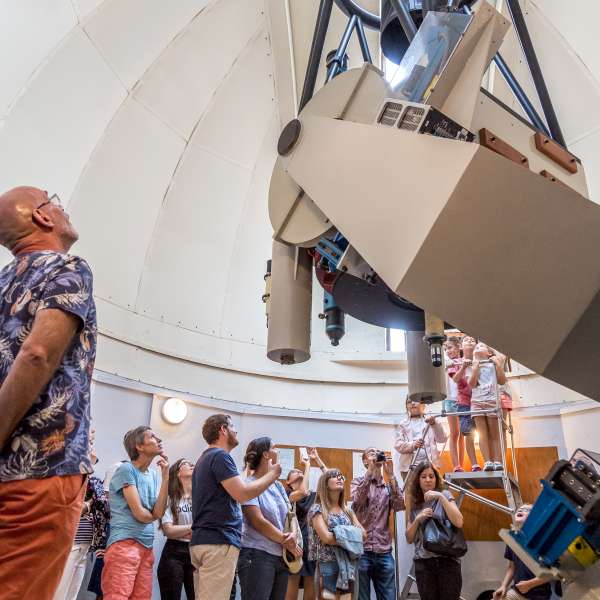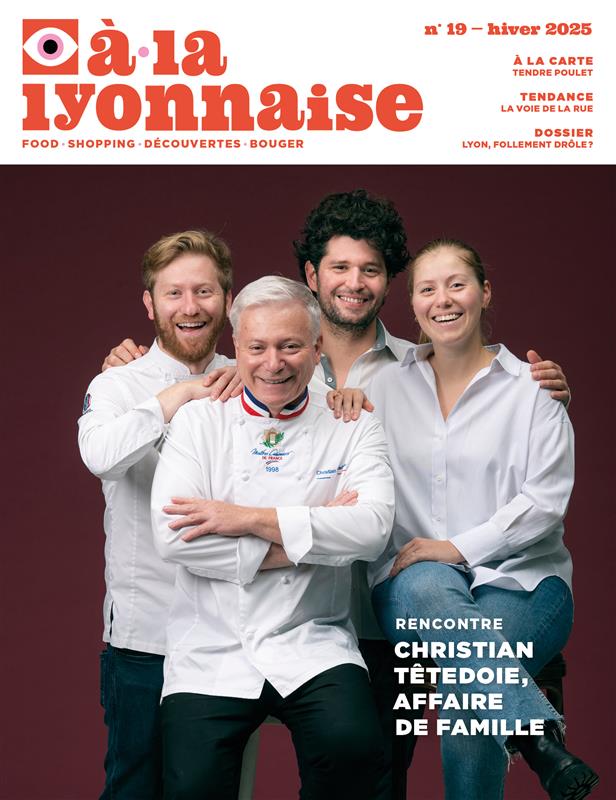Saint-Genis-Laval, the door to the stars

The town of Saint-Genis-Laval is famous among budding astronomers as the home of the former observatory of Lyon, a listed historical monument. It is also a great place to learn about the region’s history and a popular destination for walks in the surrounding countryside.
Just a dozen kilometres to the south-west of Lyon, at the beginning of an area known for its lônes (former branches of the river Rhône) and hilly countryside, Saint-Genis-Laval is one of the greenest towns in the metropolitan area, which also makes it one of the most sought-after.
As early as the sixteenth century, members of Lyon’s affluent bourgeoisie chose it as a location to build richly decorated countryside mansions, surrounded by magnificent gardens, some of the remains of which are still visible today. Among them was Thomas Gadagne, a native of Florence, who ordered the construction of the Château de Beauregard. Some of the original parts of this château have been preserved, including the gardens, five terraces and the nymphaeum, an ornamental pond fed by a source that was thought to be sacred. Of Italian inspiration, these remains provide the ideal backdrop for a romantic Sunday walk in the park of Beauregard.
A dozen minutes’ walk away, at the fort of Côte Lorette, begins a walking path named ‘La Clef des Champs’, which is a bucolic 2-kilometre loop. You can stop at the interactive augmented reality terminals placed along the route, to learn about local farming practices and all the richness of the plateau overlooking the Rhône valley, through quizzes, photo albums and sketches. The path will also take you to the site of the old observatory of Lyon, where astronomy introduction evenings are held. You can also turn off onto the Sentier de Sacuny, another walking path through fields, or follow a 3.5-km loop that runs from the bottom of the Chemin des Oliviers to Chemin de Bernicot. Lastly there is the Sentier du Pressin, a 4-km countryside path through the northern part of the plateau, featuring pastures, groves and fields of wheat. All three paths are easily accessible and will take you through a variety of landscapes, offering something to please kids and adults alike, particularly those who are keen on photography!
On the farm of the horticultural and landscaping school of Lyon Pressin, all of the activities, from growing to harvesting and selling fruit and vegetables, are carried out by the pupils (from year 9 to post-secondary vocational level). This is a great place to come to get fresh, local food all year round!
www.lyceehorticole.com
Built in 1878, the observatory has been listed as a historical monument since 2008, for its angled telescope on an equatorial mount, the last in the world in its original state. While research work is now carried out at the École Normale Supérieure de Lyon, observation evenings are still held regularly at the site.
observatoire.univ-lyon1.fr
Built in 1895, the fort of Côte Lorette, the highest point in the town, is one of the 19 forts that once formed a defensive ring around Lyon. It is also a place of memory dedicated to the 120 prisoners who were massacred here by the German occupiers just before the liberation. While it is not open to visitors, you will find a sports course, an arboretum and the beginning of a number of walking paths on the site.
La Mouche, the cultural centre of Saint-Genis-Laval, was named after the river that begins here. There is a varied, family-friendly programme on offer, including drama, music, circus arts and films.
www.la-mouche.fr
This marked-out route will take you through a number of remarkable sites in the oldest part of the town centre, including the Villa Chapuis (a beautiful nineteenth-century building), the Lavoir de la Platte (an old wash house), and the church. It offers a chance to discover the town’s cultural identity through its architectural history. It was created as a project involving the living memories of older residents and the Association Saint-Genoise du Patrimoine, des Arts et des Lettres (ASPAL, an association for heritage, art and literature).
Would you like to take home some local specialities, such as quenelle dumplings, cardoons and frog’s legs? The delicacies made by Maison Malartre are sold at Lyon’s famous indoor food market Halles de Lyon, but you can also buy them directly from their factory outlet in Saint-Genis-Laval.
www.maison-malartre.fr
On Google Play and App Store




